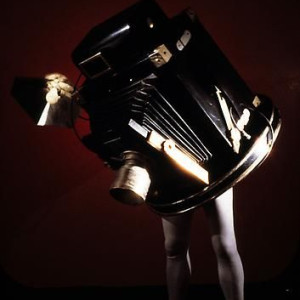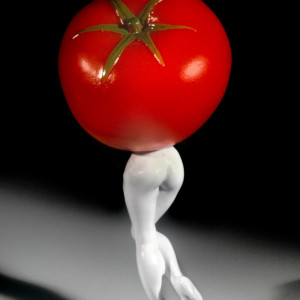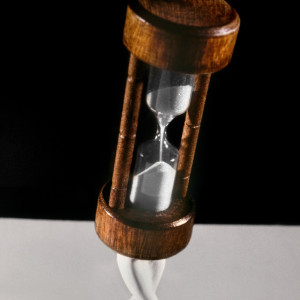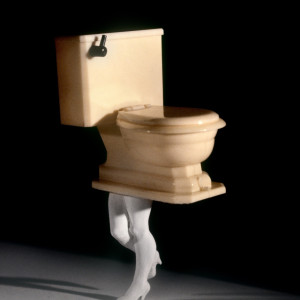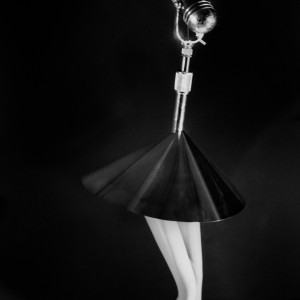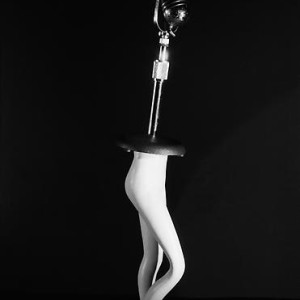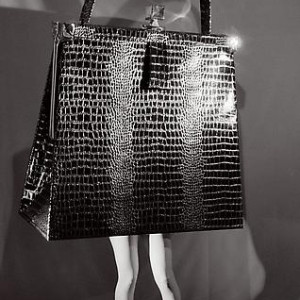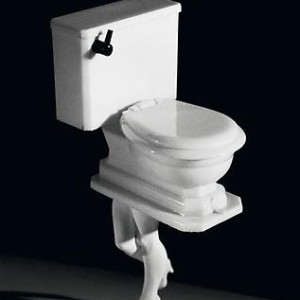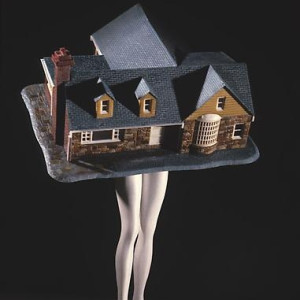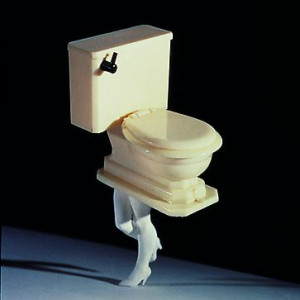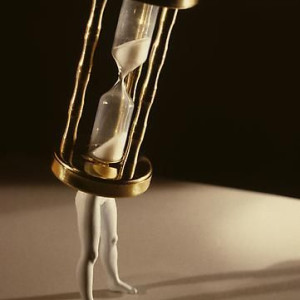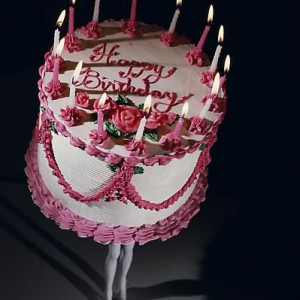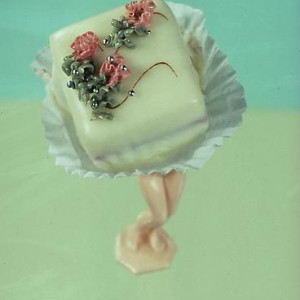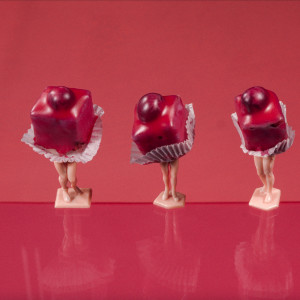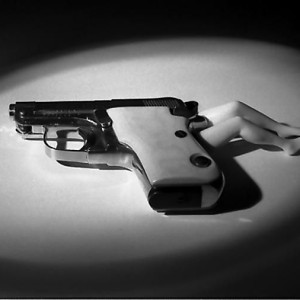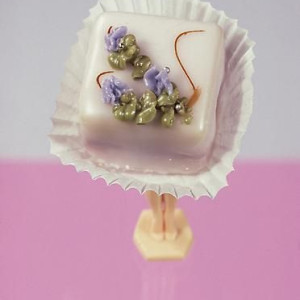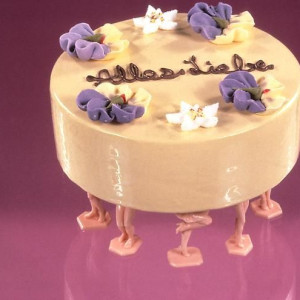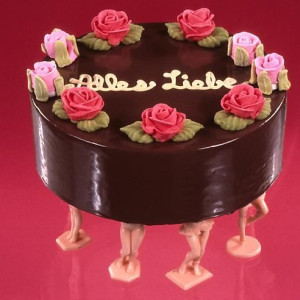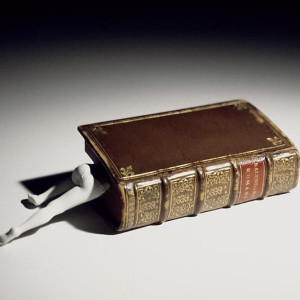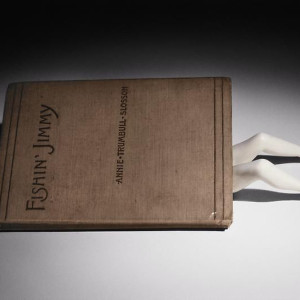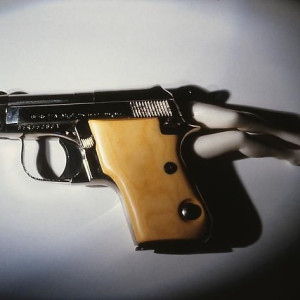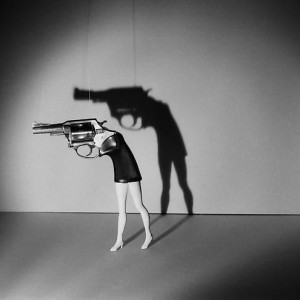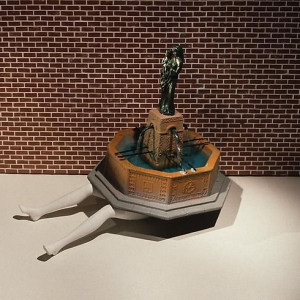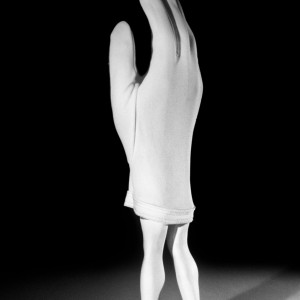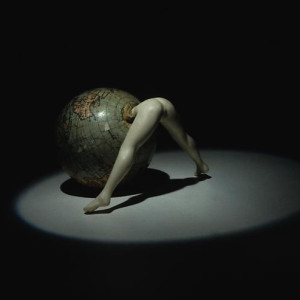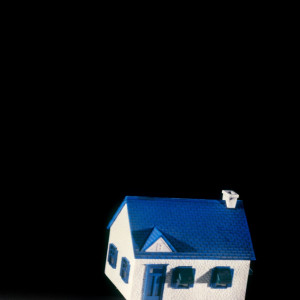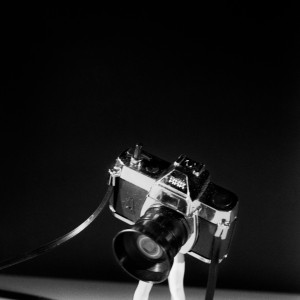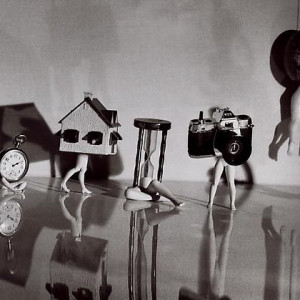Walking and Lying Objects, 1987–91
The series Walking and Lying Objects, 1987–91, reveals another important shift in Simmons’s oeuvre, marking the first time she used larger-than-life film props in works printed on a grand scale. The personified objects bring humor and playfulness into the mix. Recalling old TV commercials that featured dancing cigarette packs, Simmons created images like Walking Camera (Jimmy the Camera), 1987, in which the object is animated by the human legs of her close friend and former roommate Jimmy DeSana, whose “body” bends forward, conveying the top-heaviness of the giant prop. The work was a tribute to DeSana, a photographer who had been diagnosed with AIDS at the time of the portrait and passed away soon after, in 1990. Walking Camera, like the other photographs in the series, probes the importance of “props” in our lives and how they define who we are. But it also speaks to the ubiquity of photography, which has only intensified as time has gone on.
Gender is addressed in new ways in this series, here assigned to inanimate objects attached to flawless female legs and the rectilinear, masculine form of the camera atop male legs. Walking House, 1989, presents long, stylized legs holding a typical midcentury house. The image symbolizes the faceless 1950s American housewife attaining and displaying the aspiration expected of her.
